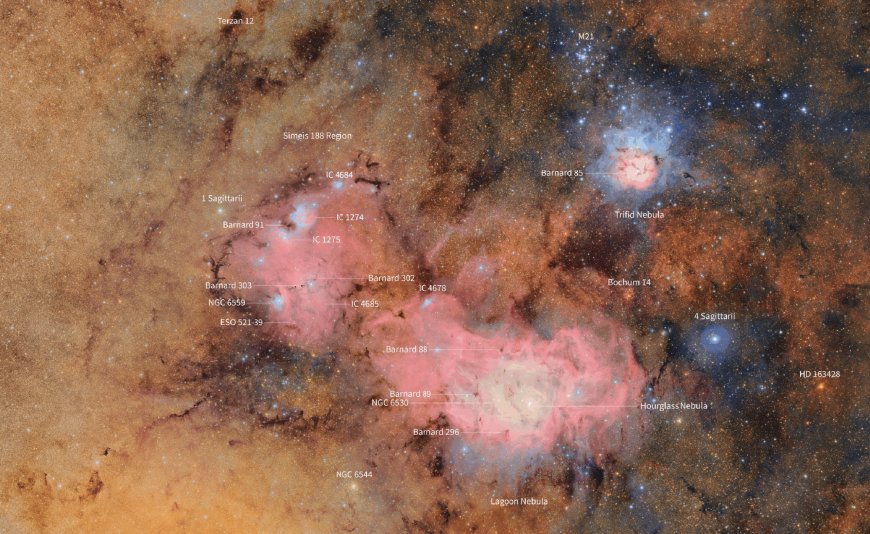Rubin Observatory Unveils First Vast Night Sky Image
The Vera C. Rubin Observatory, funded by the National Science Foundation and the Department of Energy, has released its initial large-scale image of the Southern Hemisphere sky. This image is just a glimpse of the massive 500 petabytes of data it plans to gather over the next decade. The observatory's groundbreaking capabilities will revolutionize Solar System discovery, identifying millions of previously unseen asteroids, comets, and interstellar objects. Its data will fuel scientific exploration for years to come.

The Vera C. Rubin Observatory, funded by the National Science Foundation and the Department of Energy’s Office of Science, has released its first large-scale image of the Southern Hemisphere sky. This image is just a glimpse of the 500 petabytes of data that will be gathered over the next decade.
The observatory is designed to be the most efficient Solar System discovery machine ever constructed. It will capture around a thousand images of the Southern Hemisphere sky each night, covering the entire visible Southern sky every three to four nights. This extensive coverage will enable the identification of millions of previously unseen asteroids, comets, and interstellar objects. Rubin Observatory will significantly enhance planetary defense efforts by detecting a greater number of asteroids, potentially identifying those that pose a threat to Earth or the Moon. In its first year alone, the observatory will collect more data than all other optical observatories combined. This wealth of data will fuel numerous scientific discoveries and serve as a valuable resource for scientific exploration for many years to come.
The image of the Trifid and Lagoon Nebulae, composed of 678 images taken over seven hours, showcases the observatory's capabilities. The level of detail in data collection is so high that it can track previously unknown asteroids, highlighting the observatory's potential for groundbreaking discoveries.
For a closer look, explore the zoomable version of the full release to appreciate the depth of detail captured in the image. The possibilities for scientific exploration are endless!
(Thanks, Jim)
According to the source: FlowingData.
What's Your Reaction?
 Like
0
Like
0
 Dislike
0
Dislike
0
 Love
0
Love
0
 Funny
0
Funny
0
 Angry
0
Angry
0
 Sad
0
Sad
0
 Wow
0
Wow
0




















































































































































